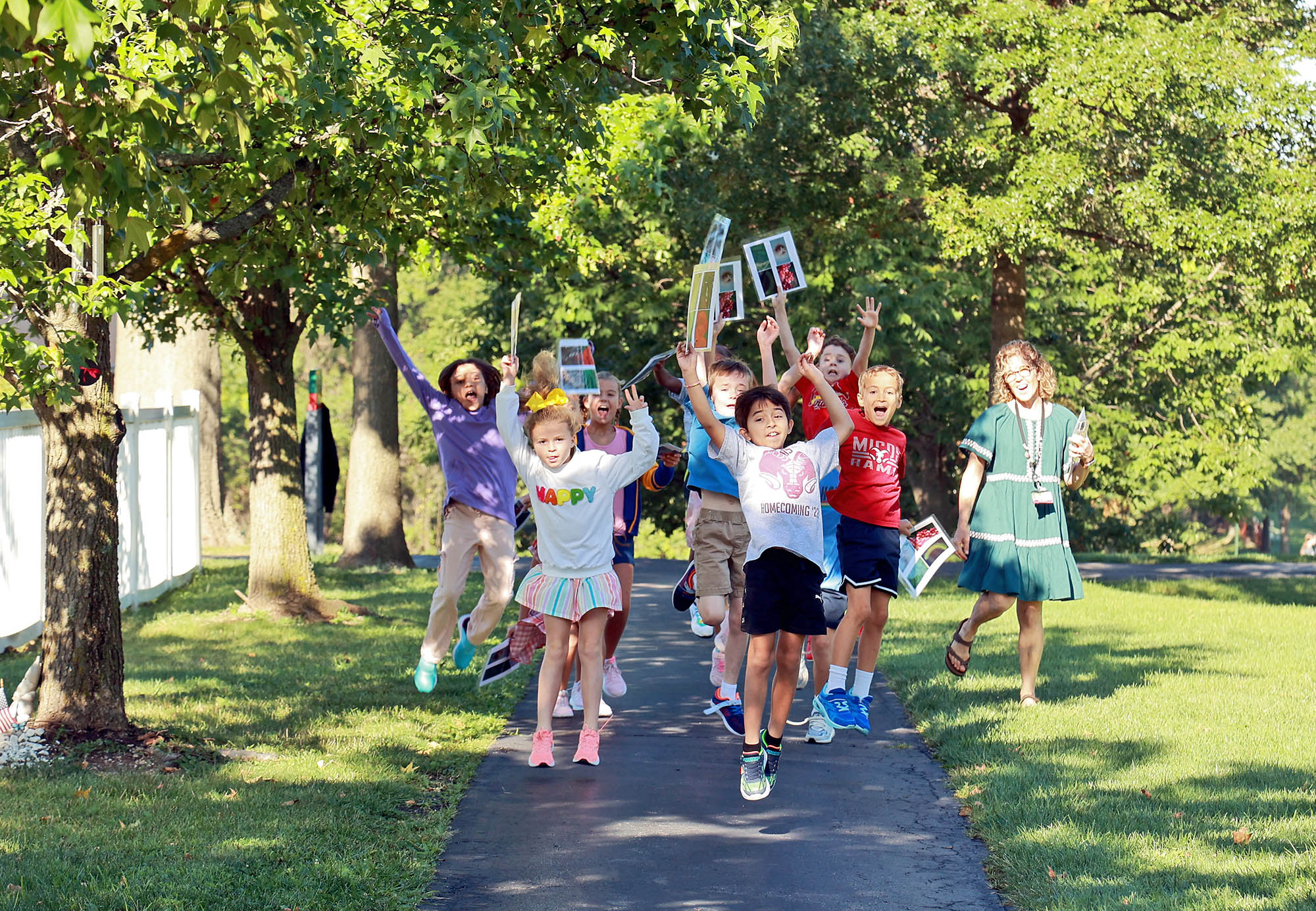Earlier this month, a study authored by Thomas Dee at Stanford University’s Graduate School of Education found that rates of chronic absenteeism in American schools grew significantly between the 2018-19 and 2021-22 academic years. In Missouri, where this trend was not as pronounced as in most other states, the share of students who missed at least one out of every ten school days nevertheless rose from 13% to 24%. In California, chronic absenteeism increased from 12% to 30%. A school counselor in San Diego observed in an interview with the Associated Press that some explanatory factors—illness, financial distress, and transportation challenges, for example—are consistent between the pre-COVID and post-COVID eras, but that students today are more likely to feel disconnected from school than they were before the pandemic. “Something has changed.”
I have been thinking a lot about connection and connectedness lately, both with the commencement of our new school year together and the myriad opportunities for connection and reconnection that it entails, and in my recent reading of Fathoms: The World in the Whale by Rebecca Giggs, a fascinating book given to me by Paul Zahller, our Suzanne Siegel Harbison ’45 JK-12 Science Department Chair. Fathoms is especially concerned with the divergence between the actual physical interconnectedness of all life and matter, for better or for worse, and the curated psychological interconnectedness that we imagine for ourselves—the divergence between an increasingly challenging reality and an increasingly distracting unreality. “Whales buoy hearts,” Giggs writes. “Whales are a wellspring of awe. How hungry we are for awe!” Yet the bodies of whales have also become repositories of our toxic waste. “Because whales are so well insulated by their thick layer of blubber, they attract fat-soluble toxicants,” she notes, “absorbing molecular heavy metals and inorganic compounds that powder the modern sea. Fractional exposure builds up over multiple seasons, making some whales more polluted than their environment.” The whale of our imagination is a noble creature who is, admittedly, forced to navigate a more polluted world than that of her ancestors, but whom we are nevertheless preserving from extinction through concerted conservational efforts. The whale in reality is itself becoming pollution—is itself becoming, in its immensity, a polluted world—whose continuing existence may ultimately, and perversely, degrade rather than enhance the health of the oceans in which it swims.
“A great deal has been written about how digital systems underrepresent the reality of people’s lives,” Giggs writes, “but less so about the compulsion to create idealized versions of nature.” She contends that the “idyllic supercontinent of pastel vistas, sunset monoliths, alpine lakes, and powdery beaches” that one discovers on social media serve to disconnect us from, rather than connect us to, our natural environment as it really exists. She also notes the power of our experiences of the world through media—through screens—to influence our perceptions even while we are sleeping. Giggs cites a series of studies which found that “adults who grew up watching black-and-white television tended to report dreaming in monochrome for the rest of their lives,” whereas children who grew up after the advent of Technicolor tended to dream in color. Of course this made me wonder about our own MICDS students. Are they dreaming in TikTok these days? Here’s what I learned from a survey of Upper School students this week, 192 of whom participated—some no doubt thanks to my announcement of a Pharaoh’s Doughnuts raffle incentive. (“Bribe” is such an ugly word.)



Our students also had these comments to share:
I don’t dream about playing a video game, I dream that I’m literally in it • I had a dream about a bunch of ocelots in Minecraft trying to escape a cage I built for them about eight years ago • A lot of my more mundane dreams usually have me doing homework on my computer • Unrelated but I dream about donuts a lot • I oftentimes have dreams where I am inside TV shows • Sometimes, I replay a dream twice like watching a video for the second time • I’ve never had a dream about my phone, laptop, etc., which is interesting considering they’re such a big part of our lives • I once had a dream where I was in Gilmore Girls • I have had video game characters in my dreams • I have only had one dream about technology and it was when I supposedly woke up and thought I grabbed my phone to check and send texts… to my surprise I ACTUALLY woke up shortly after with the feeling of typing still happening on my hands but with my phone still on my nightstand charging… HOW WEIRD IS THAT?
I referenced in one of my letters a few years ago an observation by the 20th-century Swiss writer Max Frisch: “Technology is the knack of arranging the world so that we need not experience it.” Absence is the enemy of connection and progress—absence from school, absence from community with one another, absence from our natural world. Let our technologies provide our entertainment, not our reality. There is too much real work, and too much living, to be done. “Only connect.”
Always reason, always compassion, always courage. Happy Labor Day weekend to all of you!
Jay Rainey
Head of School
This week’s addition to the “Refrains for Rams” playlist: Not Strong Enough by boygenius (Apple Music / Spotify)
